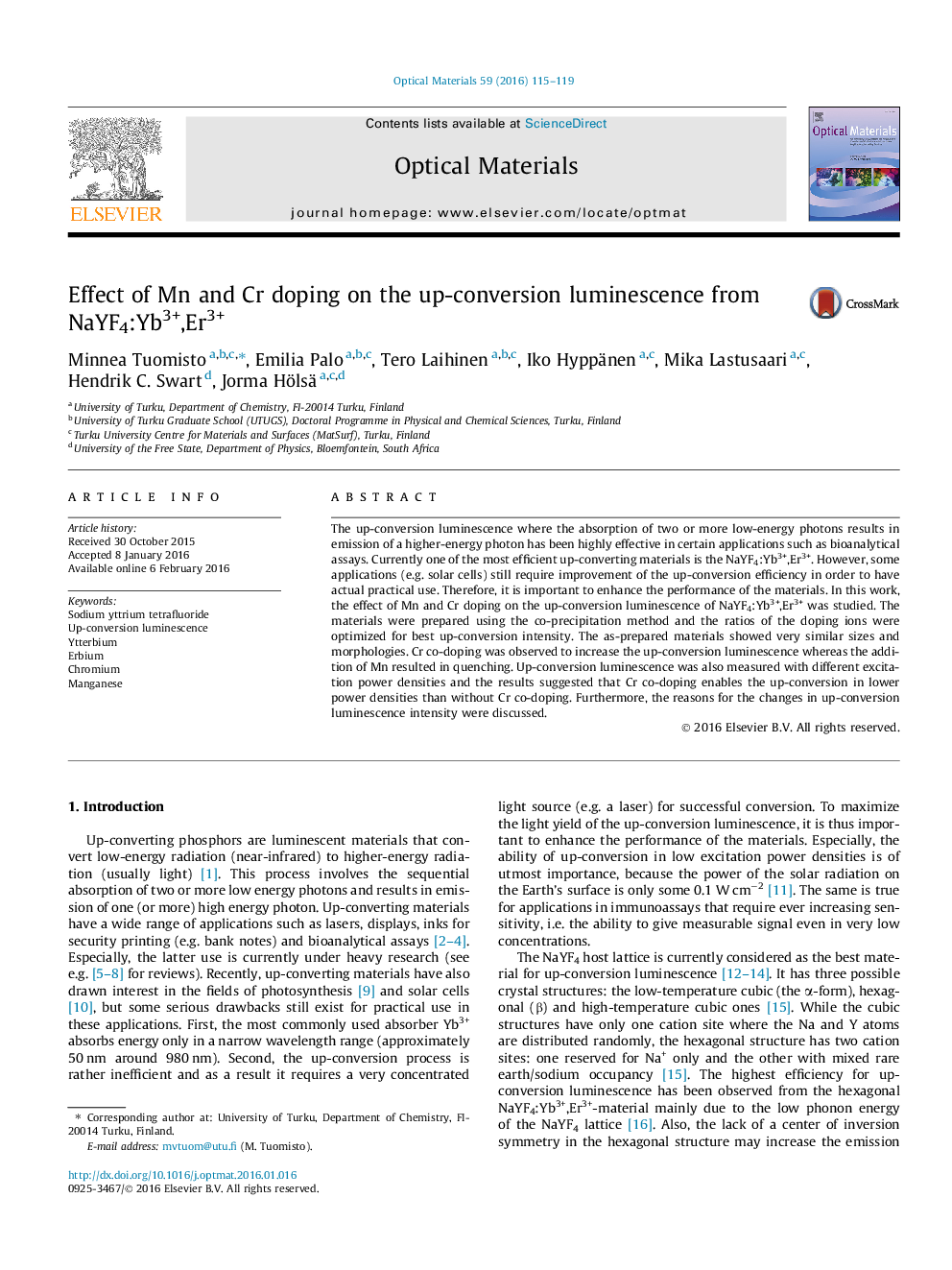| Article ID | Journal | Published Year | Pages | File Type |
|---|---|---|---|---|
| 1692107 | Optical Materials | 2016 | 5 Pages |
Abstract
The up-conversion luminescence where the absorption of two or more low-energy photons results in emission of a higher-energy photon has been highly effective in certain applications such as bioanalytical assays. Currently one of the most efficient up-converting materials is the NaYF4:Yb3+,Er3+. However, some applications (e.g. solar cells) still require improvement of the up-conversion efficiency in order to have actual practical use. Therefore, it is important to enhance the performance of the materials. In this work, the effect of Mn and Cr doping on the up-conversion luminescence of NaYF4:Yb3+,Er3+ was studied. The materials were prepared using the co-precipitation method and the ratios of the doping ions were optimized for best up-conversion intensity. The as-prepared materials showed very similar sizes and morphologies. Cr co-doping was observed to increase the up-conversion luminescence whereas the addition of Mn resulted in quenching. Up-conversion luminescence was also measured with different excitation power densities and the results suggested that Cr co-doping enables the up-conversion in lower power densities than without Cr co-doping. Furthermore, the reasons for the changes in up-conversion luminescence intensity were discussed.
Related Topics
Physical Sciences and Engineering
Materials Science
Ceramics and Composites
Authors
Minnea Tuomisto, Emilia Palo, Tero Laihinen, Iko Hyppänen, Mika Lastusaari, Hendrik C. Swart, Jorma Hölsä,
